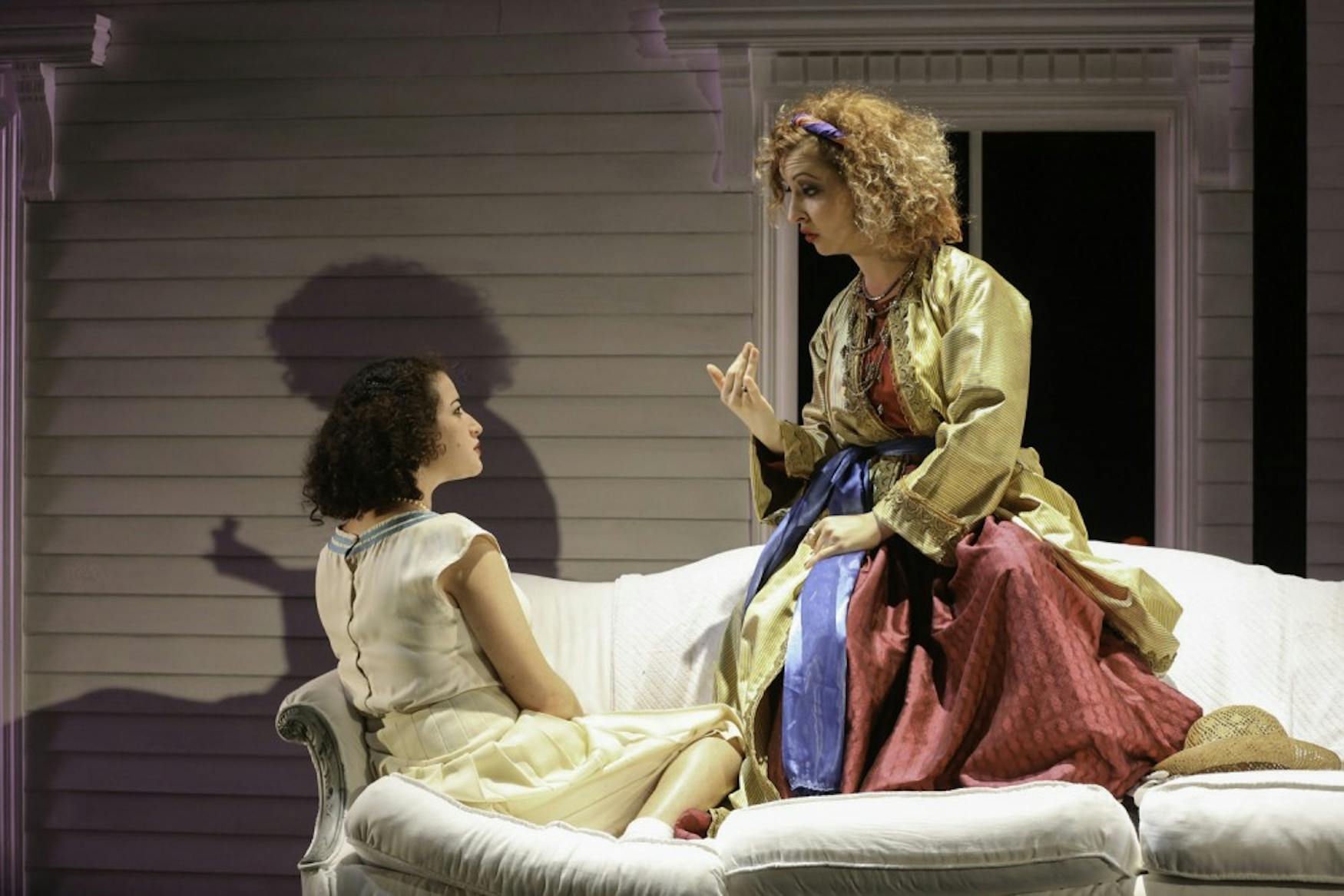Actors are poised within muddled plot
Review — If you ever want to feel sobered by a seldom-pondered thought, consider the fact that, for the most part, the same degree of painstaking effort is put into making a bad production as into a great one. Thankfully, the theater department’s fall production of Maria Irene Fornes’ “Fefu and Her Friends,” directed by Prof. Adrianne Krstansky (THA), falls into the category of good productions. However, while the production itself is finely executed, its source material weighs it down unbearably. It is an unfortunate reality, especially considering how obviously hard the entire cast and crew of this production have worked. With that in mind, I will separate my disdain for this production’s source material from my criticism of its performed product, which, all in all, is surprisingly pristine despite lacking a good script.
Fornes’ play, which takes place during a rehearsal for a charity event at the home of its eponymous character, Fefu (Rebecca Myers ’18), is something of an enigma; it begs for its overly present monologues to be decoded. These soliloquies are obviously intended to have meaning, but none that one would expect an actor to convey with any true clarity, nor even the most savvy of audience members to translate in the moment of performance. I found that when I wasn’t losing track of nearly every spoken line, I was losing interest altogether simply because the material is so serpentine. Even looking to the closed captions (provided on either side of the stage in the Laurie Theater) for guidance proved to be useless in helping me follow any of what was being said by characters on stage. Each succeeding line seemed unrelated to its predecessor. The fact that every last actor flawlessly managed to convey deep, believable emotions at the level that they did is, therefore, an absolute revelation. They have done the theatrical equivalent of turning rags to riches. In the case of “Fefu and Her Friends,” just like in real life, I fail to understand the appeal of said “riches,” but remain fascinated by them all the same.
Fefu, played with poise by Myers, is a domineering woman, proud of her self-proclaimed strangeness, who hosts the fundraiser rehearsal at her home. In the play’s opening, she is accompanied by Cindy (Keturah Walker ’18) and Christina (Roopa Boodhun ’18), who participate in lively banter with Fefu. Their conversation is interrupted by the arrival of Julia (Sarah Kenney ’18), a wheelchair-bound woman with a dark past, whose entrance is followed by those of Emma (Haia Bchiri ’20), Paula (Remony Perlman ’19), Sue (Emily Bisno ’19) and Cecelia (Alex Wu ’19). As the play progresses, we bear witness to intimate conversations between numerous characters, which, as I mentioned before, are ones I find to lack any and all contextual substance. The only variable in this particular production that allows these close exchanges to bear any relevance is the performances on stage. These eight actresses are magnificent and absolutely worthy of an audience, and have talent that deserves much better material than “Fefu and her Friends.” The performances of Kenney and Bchiri particularly stand out, with both actors delivering captivating physical and emotional performances that especially transcend the underwhelming source material that they are faced with interpreting.

GIRL TALK: Fefu and her friends sit together on a couch as Cecelia (Alex Wu ’19) stands near them.
Supporting the actors is all-around wonderful technical work. Mary Hurd’s costumes are stunning and perfectly complement the characters who wear them. The naturalistic set design by Cameron Anderson is minimalistic yet maximizes the stage space. Lighting the set and players is the thematically evocative design of Jeff Adelberg, which produces looming shadows of characters on the white background of the stage.
I think my greatest disappointment in this production is that I went in expecting to see a proudly feminist play, but left the theater having not seen one; the feminism here felt like a subtext rather than an all-encompassing theme. Feminism deserves a platform more universally comprehensible than “Fefu and Her Friends.” This unfortunate thematic misrepresentation of which I speak is likely a testament to Fornes’ script, which allows for the show’s intended feminist overtones to fall between its cracks of conceptual convolution. However, in light of nuanced technical work, dedicated performances and Krstansky’s directive choices, the show is a finished product, which is far superior to its lackluster source material and far more effective than it should be.



Please note All comments are eligible for publication in The Justice.